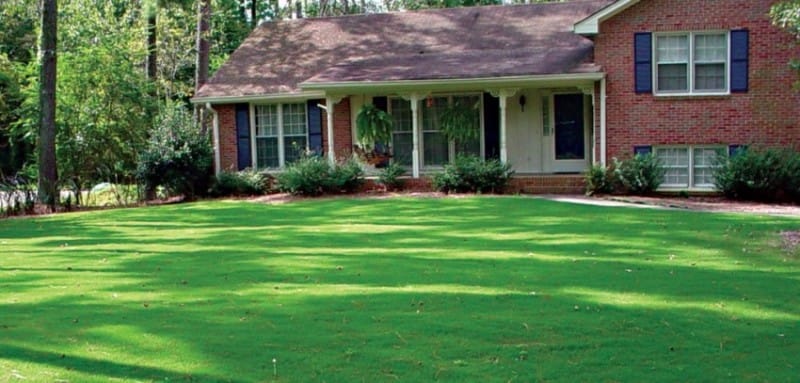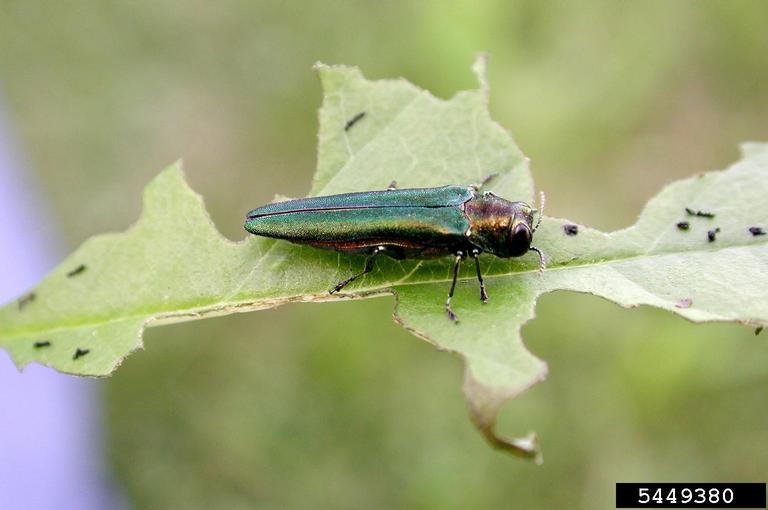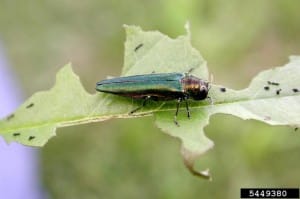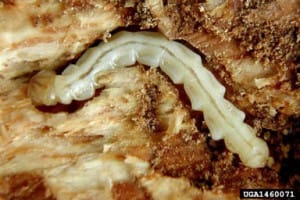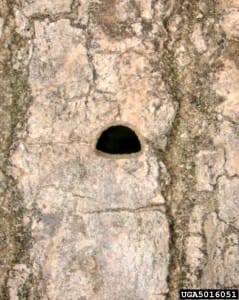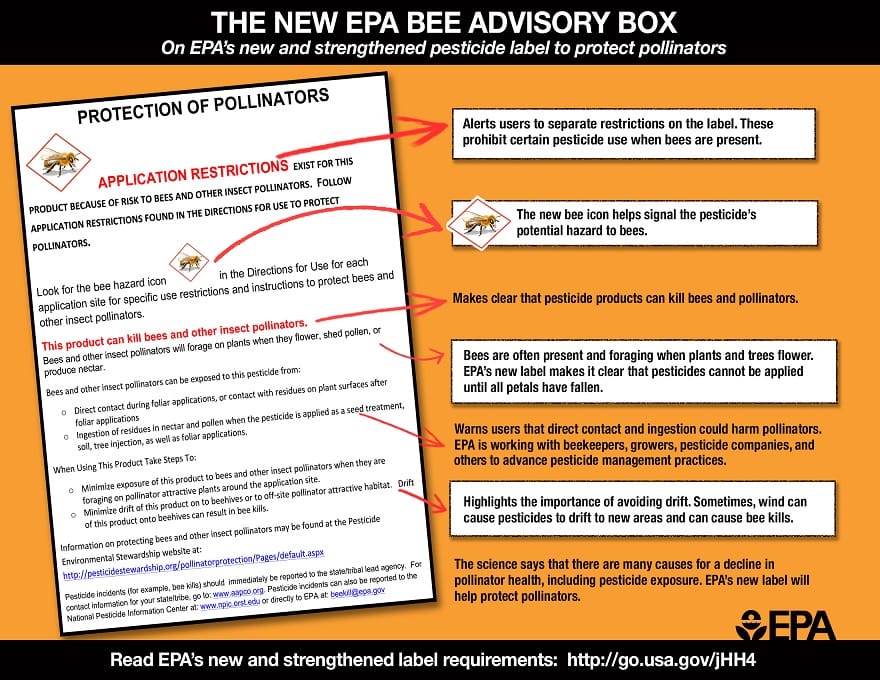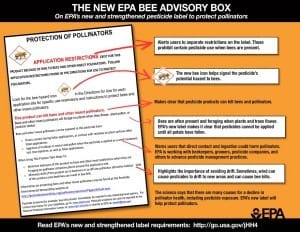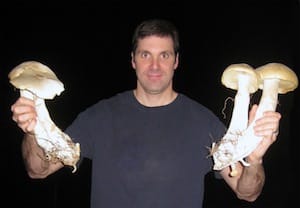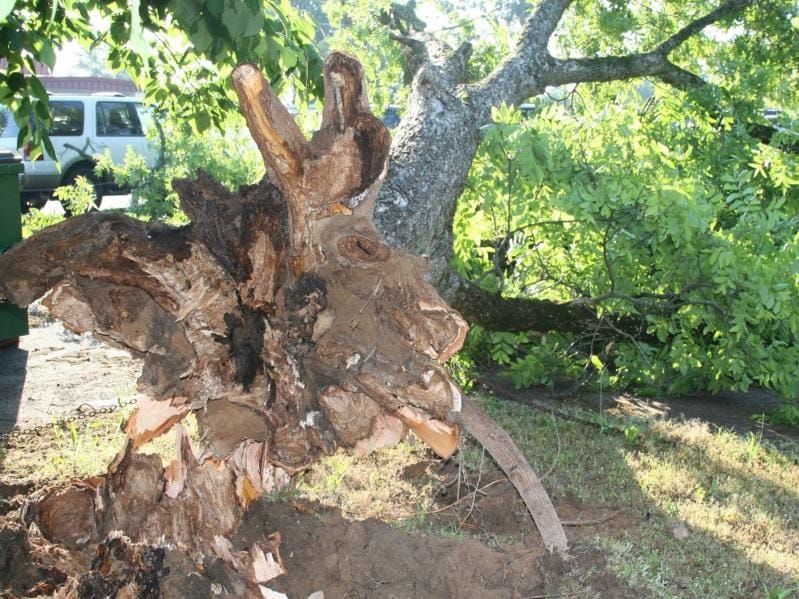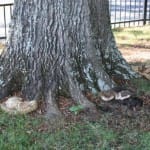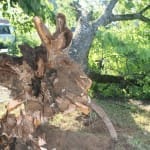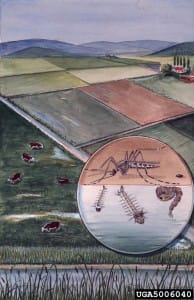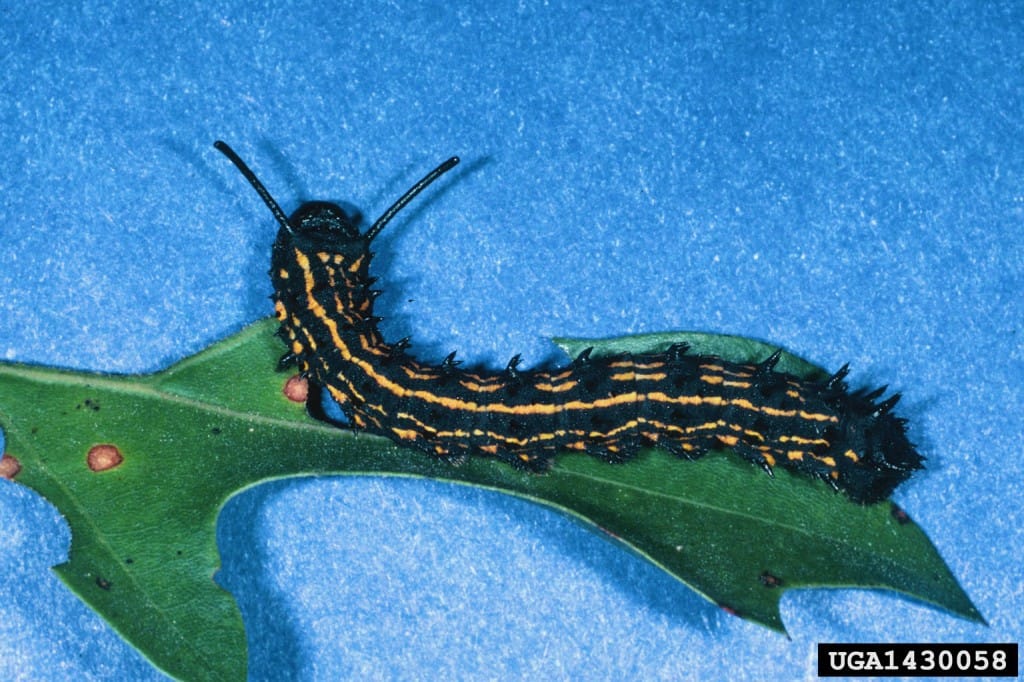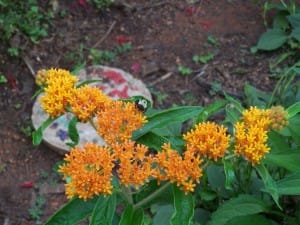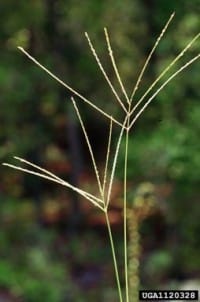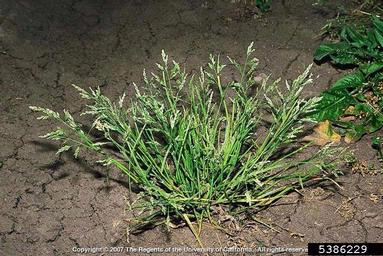- Carl Whitcomb, PhD, Carl is a consultant to the nursery industry and author of several books, including Establishment and Maintenance of Landscape Plants, Lacebark, Inc., P.O. Box 2383, Stillwater, OK 74076). He lives in Stillwater, Oklahoma.
- Walter Reeves
For starters, dig a shallow hole and avoid soil amendments.
Planting Shrubs and Trees
How you plant a shrub or tree determines whether the plant struggles to grow, dies outright, or takes off and thrives. I know this firsthand. For 20 years I conducted research with a wide variety of ornamental shrubs and trees, planting them in different ways and observing the results. I learned, often to my surprise, that many common recommendations about planting are wrong or useless. You may think that the traditional approach to transplanting-digging a deep planting hole, amending the soil with organic matter, pruning branches to compensate for lost roots, and not fertilizing at planting time produces good results, but my research shows that a different approach works better.
Whether you’re planting a bareroot, balled and burlapped (B&B), or container plant, your shrub or tree is more likely to thrive if you provide a well-drained site, a wide, shallow planting hole, the right kind and amount of fertilizer, and regular watering. It will do even better if you use organic matter as a mulch instead of as a soil amendment and leave the plant unpruned, unless it has weak, damaged or ill-placed branches.
The time of year is another important consideration when you plant a tree or shrub. Spring, summer and fall can all be appropriate planting times, as long as you take into account the impact of each season on plant growth. In many parts of the country, the cool weather, high humidity, and abundant rainfall of spring make this a particularly good time to plant. In summer, warmer temperatures promote growth but also increase a plant’s demand for water, so if you decide to plant at this time, choose a plant that has been well watered at the garden center, and irrigate it as needed after planting. Fall planting also has advantages – cooler air temperatures reduce the demand for water while the lingering warmth of the soil encourages rapid root growth. Take care, however, to allow your transplant enough time to become established before winter sets in.
Check the soil drainage before you plant. No amount of care in planting can make a shrub or tree thrive if the soil is so wet that the roots don’t get enough oxygen and they suffocate. To test drainage, dig a hole 8 in. wide and 12 in. deep, fill it with water several times during the day until the soil is saturated and then fill it again in the evening. If there is standing water in the hole 24 hours later, you must improve the drainage or limit yourself to the relatively few woody plants that tolerate wet sites.
The easiest way to improve drainage is to plant on berms or raised mounds of soil. Start by loosening the soil beneath the mound to a depth of 4 in. to 6 in. Next, pile additional topsoil 6 in. to 1 ft. high in a circle at least three times as wide as the root system of the plant, and set it in place as if the top of the mound were ground level. Mounds tend to dry quickly (and the lighter the soil, the faster they dry out), so you have to water diligently the first, and often the second year, until the roots establish themselves.
The surest way to improve drainage is to run perforated drain pipe through a gravel-filled, underground trench. The pipe must run to a low spot to carry away water. Since most roots are in the top 1 ft. of soil, the pipe must be installed 16 in. to 18 in. deep.
If you can’t improve the drainage plant shrub or tree species that tolerate wet sites. For help in choosing a suitable plant, check with a local nursery or consult these books: Landscape Plants for Eastern North America, by Harrison L. Flint, John Wiley & Sons, 1 Wiley Drive, Somerset, N.J. 08875); Pocket Guide to Choosing Woody Ornamentals by Gerd Krussmann Timber Press, 9999 S.W. Wilshire, Portland, OR 97225); and Know It and Grow It 11: A Guide to the Identification and Use of Landscape Plants, by Carl Whitcomb, Lacebark, Inc., P.O. Box 2383, Stillwater, OK 74076).
Dig a wide planting hole
The ideal planting hole is wide and shallow – at least twice the width of the root system of the plant, and the wider the better. Roots need oxygen for growth, and they get most of it from open spaces between particles of soil. A broad circle of loosened soil around a new shrub or tree helps to insure that the roots have the air they need during the first growing season.
Dig a planting hole the same depth as the root system of your shrub or tree. Deeper holes can lead to trouble. The soil may settle enough after transplanting to create a depression around the plant. If rain collects and stands in the depression, or if soil washes in and packs around the trunk, there is a danger of encouraging root and trunk diseases. Many publications suggest digging a deep planting hole, then packing the soil in the bottom to prevent settling. Since air is vital to root growth, it makes no sense to dig the soil out, then pack it back in.
Prune sparingly, if at all
On the face of it, pruning a shrub or tree at planting time sounds plausible. When a nursery digs up a bare-root or a B&B plant, most of the root system remains in the ground, producing a plant with a top too big for its roots. Even container-grown plants can end up disproportionately top-heavy after their potbound roots are pruned away.
It would seem that such extensive root loss would prevent the plant from taking up enough water, so you’d need to cut back the top to reduce its water needs. But, in fact, my research shows that even if shrubs or trees lose many roots during transplanting, the unpruned plants do better than the pruned ones during the first year. They put on more growth, and fewer of them die. After two years, the pruned trees catch up with their unpruned neighbors, but pruning takes its toll. The pruned trees, especially those with one-third or more of their branches removed, often have less attractive shapes. Also, severe pruning frequently prompts young trees to produce new branches that are too close to adjacent ones, or that grow out from the trunk at narrow angles. By contrast, unpruned trees generally have better-spaced branches with stronger angles, and they look more natural.
Why does an unpruned shrub or tree thrive? I have a theory. The root system, though diminished in size by digging or pruning, appears to be able to keep up with the early demand for water from the top if the soil has plenty of moisture. Meanwhile, the root system of an unpruned plant grows faster than that of a pruned plant because expanding leaf buds produce hormones and sugars that stimulate root growth, and the more buds, the faster the growth. Plants with better root systems are more likely to thrive, especially during hot, dry weather.
While I’ve found that pruning for balance between top and roots does no good, corrective pruning does have a place at planting time. If a shrub or tree has a cluster of branches growing too close together for good looks or health, remove a branch or two. You also should remove damaged branches; the weaker of two branches that cross; and branches that ascend from the trunk at a steep angle, because their crotches, the places where the branches meet the trunk, will always be weak.
Hold the soil amendments
For decades, gardeners have mixed organic amendments into the soil to help establish newly planted shrubs and trees. The resulting “lighter” soil might sound like a good idea, but I’ve found that soil amended with peat moss, pine bark and similar organic materials produces no better results than unamended soil and sometimes gives less vigorous growth. Of all of my findings, this one has generated the most controversy among professionals and home gardeners alike. When I finished my first talk about these experiments, the moderator implied that my results were somehow unpatriotic, commenting that he didn’t intend to ask me what I thought about apple pie or motherhood. Actually, I, too, once believed in the need for soil amendments. In fact, my first experiments were designed to learn which additives were best for planting, and I was as surprised as anyone to learn that none of them produced better results than unamended soil. I’ve since repeated my experiments in several parts of the country and on different kinds of soil, and got the same results.
In the first year or two after planting, the difference between shrubs and trees in amended soil and unamended soil is moderate above ground, but often striking below ground. Since plants in amended soil rarely show visible signs of stress, there is no reason to question the
practice. But after digging up hundreds of plants, I’ve learned that plants in unamended soil send roots as far as 3 ft. or 4 ft. from the original root ball in a year or two, while the roots of plants in amended soil are still largely confined to the planting hole.
Roots in amended soil grow more slowly because they often have too little or too much water. On well-drained sites, soil amendments such as peat often deprive the roots of moisture. The amended soil quickly loses much of the water it absorbs to the surrounding, often finer-textured, soil, which acts like an ink-blotter and pulls water from the peat by capillary action. The loss is very rapid when the ground is relatively dry, and is compounded by the demand for water from the top growth of the plant. During hot, dry spells, when a plant loses lots of water, the amended soil may be dry enough to cause plant stress even though the surrounding unamended soil is still moist enough to support growth.
On poorly-drained sites, soil amendments can collect too much water. The amended soil has a coarser texture than the surrounding soil and therefore allows water to penetrate more rapidly. During a rainy period or prolonged irrigation, the planting hole can fill up like a bathtub, causing roots to suffocate, or suffer enough stress and dieback to encourage root diseases.
Some acid-loving plants, such as azaleas, do grow better when the soil is heavily amended with organic matter, which tends to be acidic as it breaks down. The benefit, however, stems largely from the decrease in soil Ph rather than improved soil structure. You could skip the peat moss, lower the pH with powdered or granular sulfur and have equally good results.
If you have organic matter available, you’ll have better results if you use it as a mulch, imitating the way organic matter would be added to the soil in nature, rather than using it as a soil amendment.
Fertilize as needed
Should you fertilize newly-planted shrubs and trees? Yes, provided a soil test shows that fertilizer is, in fact, needed. It’s important not to deprive the plant of nitrogen or other nutrients following planting.
You can apply fertilizer by spreading it on the soil surface, or by adding it to the planting hole. Much has been said and written to warn gardeners that fertilizer in the planting hole causes root damage, a bugaboo probably based on experiments in the 1920s and 30s when the principal form of nitrogen fertilizer was sodium nitrate. Fertilizers are salts. Those with a high salt index (the measure of saltiness)- may absorb water that roots need when the soil is dry. Leaves die, and the damage is misleadingly called fertilizer burn. Today, though, there are forms of nitrogen fertilizer that can be added to the planting hole safely. For example, urea, one of the most widely available forms of nitrogen fertilizer, has a salt index of 1.6 per.
Test the soil before you plant, and apply no more fertilizer than the soil test calls for. (Any fertilizer applied at excessive rates can cause problems.) If fertilizer is needed, choose one with a low salt index. To supply nitrogen, look for a formulation that includes ureaformaldehyde, IBDU (isobutylene diurea) or ammoniated phosphate. If your soil has a phosphorus deficiency, incorporate superphosphate (with an analysis of 0-20-0) or triple superphosphate (0-46-0) into the soil as the test results suggest. (It is important to note that phosphorus does not move through the soil. It must be mixed into the root zone in order to be readily available to plants.) The salt index of superphosphate and triple superphosphate is near zero. If you have to add potassium, be aware that potassium chloride (muriate of potash), the most common potassium source, has a very high salt index. Use it with care.
In general, fertilizers derived from organic sources pose little risk of salt damage because they release nutrients very slowly. Slow-release or controlled-release chemical fertilizers offer the same advantage; even if they contain nutrients in forms that have high salt indices, they become available to plants so slowly that they are unlikely to cause any harm. Organic and other slow-release fertilizers cost more initially, but they don’t need to be applied as frequently.
In good soils, fertilizing at planting time has little impact on the first flush of top growth following planting. That growth is influenced mostly by growing conditions the previous summer and fall, when buds were formed. However, remember that fertilizing at, or shortly after, planting encourages additional growth that year and promotes bud development the first fall following planting. These buds will produce the spring flush of growth one year after planting, and it’s that growth that reflects how “happy” the plant is in the new site.
Lay on the mulch
Young shrubs and trees do better when competition is kept in check, and mulch is the best way to supply the relief they need. Mulch suppresses weeds, conserves moisture, checks erosion, prevents soil compaction in heavy rains and moderates soil temperature. Pine bark, aged woodchips, pine straw, chopped leaves – most organic materials, in fact – work well as mulch.
Apply mulch to a sizable area around a newly-planted tree or shrub – the roots will eventually extend far from the trunk. The right depth for mulch is 2 in. to 4 in., depending on the type of soil it covers. Less mulch is required for heavy soils, more for light soils. In either case, mulch that is too deep can cause problems. It can prevent the soil from drying out, depriving plant roots of necessary oxygen. Extremely deep mulch also may encourage rodents which can damage plant stems. Do not place mulch more than 2 in. deep next to the stem of a tree or shrub. an excessively deep, fine-textured mulch around the stem may kill the bark near the soil line, resulting in the eventual death of the entire plant.
Keep in mind that organic mulches may temporarily tie up a substantial portion of soil nitrogen, which is used by the microorganisms that break down the mulch. In time, the nitrogen bound by the microorganisms will be released, but in the short run, additional nitrogen may be required to support vigorous growth of new plantings. To prevent problems, broadcast a bit of nitrogen fertilizer on the soil before you mulch.
Water diligently
All plants need soil with adequate moisture, especially while their root systems are growing rapidly. Water is the necessary ingredient for plant growth that is most often in short supply. If rain falls short, make up the deficit by watering deeply every five to seven days, taking care not to suffocate roots by overwatering. In my research, supplemental watering throughout the first growing season made an enormous difference in the growth of transplanted shrubs and trees.
I recommend drip irrigation systems whenever possible. They conserve moisture, while minimizing the liability of overwatering. Since you don’t wet the foliage, you don’t encourage leaf diseases. The key to using drip irrigation is to water thoroughly, then allow the soil to dry moderately before watering again. Placing mulch over the drip system helps slow evaporation of moisture from the soil.
Start with a healthy plant
I have one last suggestion to offer about planting shrubs and trees: select only thrifty plants, those grown properly at the nursery and handled with care before sale. Thrifty plants are those with good, deep leaf color and plump stems and buds. The key to successful transplant establishment is the energy inside the plant. This is more important than what is done outside the plant. All the care in the world cannot make a sickly plant thrive.
Once you have chosen a healthy specimen, it is up to you to provide the conditions that will enable the plant to adapt to its new site and prosper there. Give it a wide hole, the necessary fertilizer, mulch and plenty of water, and it will reward you with vigorous growth.
Resource(s):
